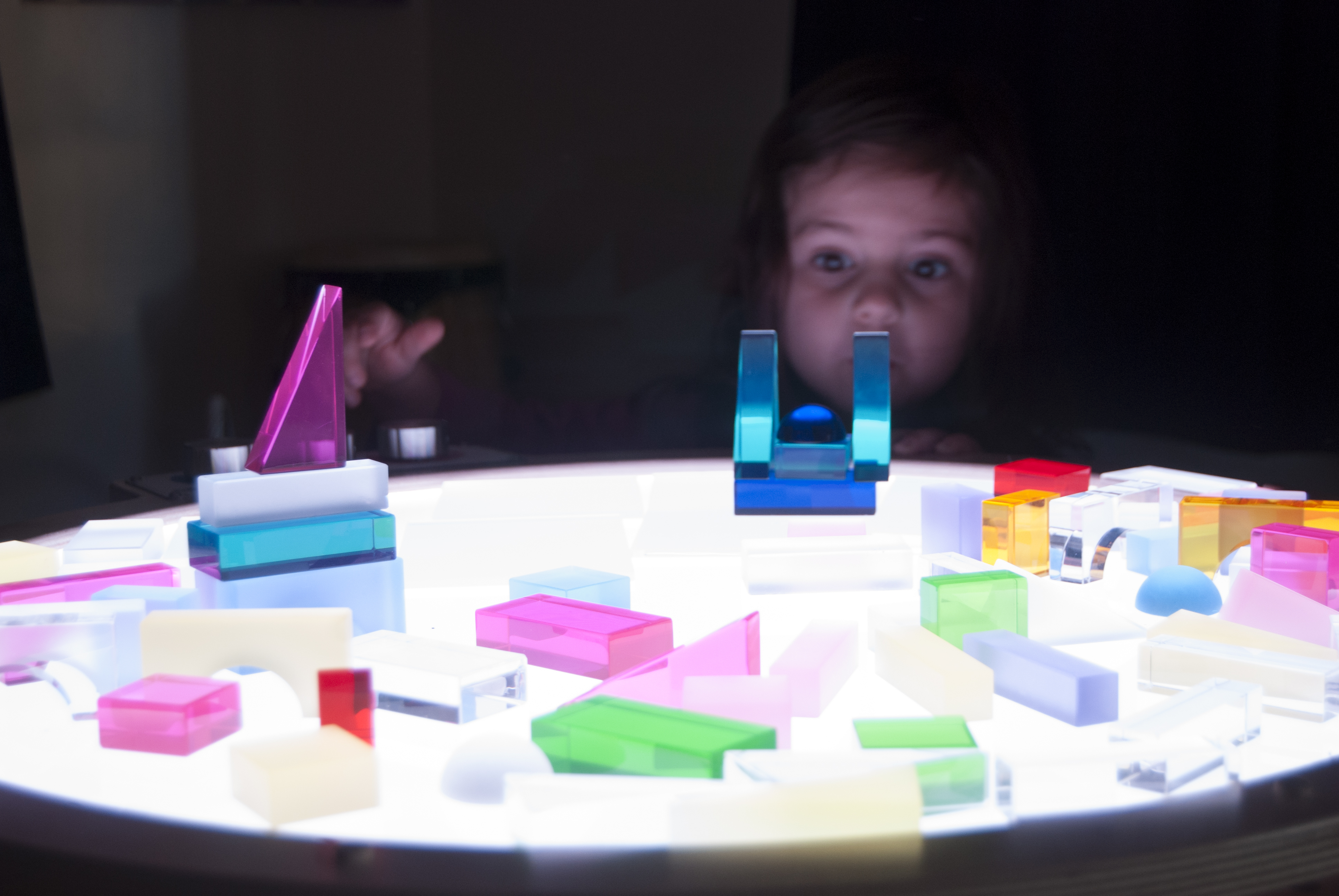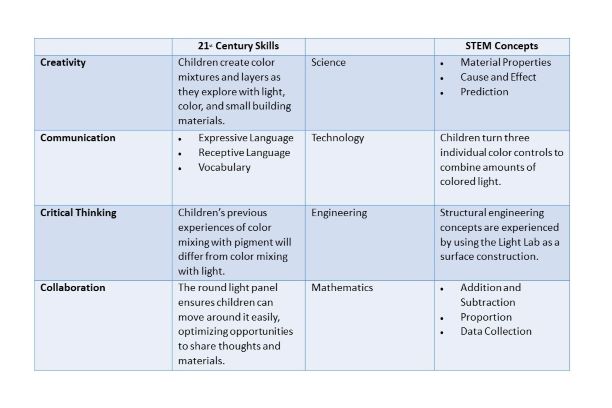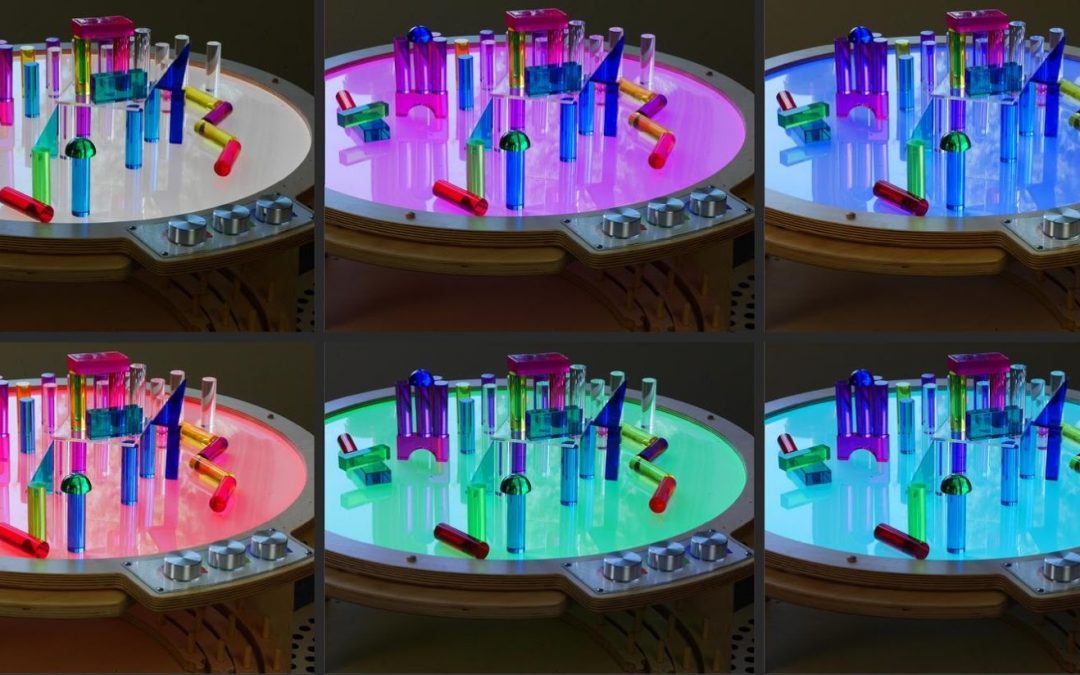Kodo’s Light Panel is the only light panel available that allows the direct physical control of color mixing – children are able to adjust amounts of red, blue, and green for infinite color combinations.
“So what?!” some might say….
Well, it’s actually a pretty big deal…..
At Kodo, everything starts with “WHY?” If there’s not a good “WHY”, then we don’t do it. Period. Chris Hume, Founder of Kodo and Inventor of the Light Lab, tells us the WHY behind the Light Laboratory…
“Light is a fascinating element that is often overlooked. Thankfully children are intrigued to explore even the most common elements when presented in a way which can be manipulated and explored. Kodo was the first to bring a full color light table to ECE and the Kodo Light Lab is still by far the best light table on the market (despite the cheap copies)! Our objective was to provide children with a hands-on way to manipulate the colors of light. Children add and subtract color by changing the intensity of red, green, and blue; the building blocks of white light! In this playful process, children learn:
additive color mixing: all the colors together make white
subtractive color mixing: all the colors mixed together make black (as happens with paint)
This simple experience provides a foundational understanding of color mixing and light that even most adults don’t have! Through teacher interaction and extension activities, teachers can speak to the science behind light and color. (Don’t worry, we help you with this in the product guide.)

Helping children build this type of foundational understanding of a scientific subject (which Kodo products are designed to do) intersect measurable outcomes, NGSS cross cutting concepts, 21st century learning skills and -let’s face it- hands on knowledge of the world. This foundational understanding will help children excel in future schooling and in life!
The science of Light is an incredibly deep and complex subject. For instance, White light is not a color, but rather a combination of all the visible colors we see. In the play based preschool classroom, children have the opportunity to experience science in a way those in higher academic years do not. With the Light Lab, Kodo looks to use this opportunity and empower children through play to take control of the light and build a foundational understanding of the additive and subtractive properties of light.
While we always have the child in mind as the ultimate end-user, we also design our products for the caregiver. Teachers are a top priority when looking at a product’s versatility for creating lesson plans and engagement opportunities for children. We design each product to include a wide range of uses and ways to extend children’s engagement over time. The Light Lab is no exception. With the wide variety of accessories and the many manipulatives available from Kodo and other vendors, the Light Lab can extend exploration throughout the year.”
Connecting to the Standards
So, what’s the big deal? Yes, it’s a beautiful material to have in the environment, but why is this important to children’s learning? Let’s take a closer look at just a few of the standards.
As children explore the Kodo Light Lab, they make inferences about what happens when a color knob is changed and predict the color(s) that emerge right before their eyes.
- Head Start Alignment – Cognition – Scientific Reasoning
- Goal P-SCI 4. Child asks a question, gathers information, and makes predictions.
- Goal P-SCI 6. Child analyzes results, draws conclusions, and communicates results.
- Teaching Strategies Objectives – Cognition
- 11. Demonstrates positive approaches to learning
- d. Shows curiosity and motivation
- 11. Demonstrates positive approaches to learning
- Teaching Strategies Objectives – Science and Technology
- 24. Uses scientific inquiry skills
When children engage in play together (or with a teacher), they communicate common goals or ideas, analyze what might happen to the surface or changes of color when they add additional materials, like the Lumi and Luxi blocks.
- Head Start Alignment – Social and Emotional Development
- Goal P-SE 4. Child engages in cooperative play with other children.
- Teaching Strategies Objectives – Social – Emotional
- 1. Establishes and sustains positive relationships
- a. Forms relationships with adults
- c. Interacts with peers
- 1. Establishes and sustains positive relationships

Children expand building and construction when additional materials and loose parts are included. The light lab can immediately become a space to foster and promote creativity.
- Head Start Alignment – Approaches to Learning
- Goal P-ATL 12. Child expresses creativity in thinking and communication.
- Teaching Strategies Objectives – Physical
- 7. Demonstrates fine-motor strength and coordination
- Teaching Strategies Objectives – The Arts
- 33. Explores visual art
Integrating STEM and 21st Century Skills
Kodo’s foundation is based on STEM play and fostering 21st Century Skills. Let’s take a closer look at how the light lab fosters these:

Follow Along
Do you follow us on Social Media? The month of October 2019, Kodo will be taking a closer look at the Light Lab and the materials, tools, and accessories to enhance the play and learning for children. Follow along using #KodoLightLab


